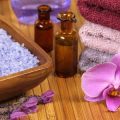Understanding Everyday Chemicals in the Home
The modern British household is filled with a variety of products designed to make daily life easier, cleaner, and more enjoyable. Yet, many of these everyday items—often tucked away under the sink or stored in the garden shed—contain chemicals that could pose risks, especially to curious children and playful pets. From cleaning sprays and bleach used for tackling stubborn stains, to garden treatments such as weed killers and slug pellets, and even DIY products like paints, adhesives, and solvents, these substances are commonplace. While they serve important purposes in maintaining our homes, it’s essential to recognise that many contain ingredients which can be harmful if ingested, inhaled, or even touched. As we strive to create a safe haven for our families in the UK, understanding what’s inside these bottles and packets is a crucial first step. Being aware of the potential dangers—whether from accidental spills, improper storage, or simple curiosity—empowers us to make thoughtful choices about where and how we use such chemicals. This awareness is particularly important in a British context, where changing seasons may increase the use of certain products—like antifreeze in winter or fertilisers in spring. Prioritising knowledge over convenience can help ensure that our homes remain welcoming sanctuaries for both little ones and furry friends alike.
Childproofing Your Living Spaces
Creating a truly safe haven for your family in the UK means paying close attention to the areas where children are most likely to play, explore, and relax. With curious minds and little hands, young ones can quickly find themselves in potentially dangerous situations if household substances and everyday items aren’t properly secured. Here’s how you can practically safeguard your living spaces while embracing a balanced, healthy home life.
Safe Storage of Household Substances
Many common cleaning products, medicines, and even some toiletries contain chemicals that can pose risks if ingested or handled by children. The key is prevention—store all hazardous materials well out of reach or in locked cupboards. Consider using childproof locks for added peace of mind. Below is a handy guide for safe storage:
| Substance Type | Recommended Storage | Extra Precautions |
|---|---|---|
| Cleaning Products | High shelves or locked cabinets | Keep original labels on; never decant into food/drink containers |
| Medicines & Vitamins | Locked medicine cabinet (preferably wall-mounted) | Return after every use; avoid leaving on counters or bedside tables |
| Laundry Pods & Detergents | Away from kitchen/utility room floors; locked box if possible | Ensure lids are secure after each use |
| Pest Control Products | Shed or garage in sealed containers; out of main house if possible | Opt for pet- and child-safe alternatives when available |
| Batteries & Small Electronics | Drawer with child lock or high shelf storage | Dispose of used batteries promptly and safely |
Smart Usage Habits for Everyday Safety
- Clean as You Go: Promptly wipe up spills to prevent accidental contact or ingestion.
- Avoid Mixing Chemicals: Never combine different cleaning agents—it can cause toxic fumes.
- Read Labels Carefully: Choose products with clear safety instructions and use as directed.
- Airing Out: When using strong-smelling products, open windows or doors to ventilate rooms, keeping children away until the space is aired out.
- Teach Awareness: As children grow, explain what substances are off-limits and why safety matters.
The British Balance: Modern Solutions with Traditional Values
The classic British approach values both practicality and comfort at home. Embrace modern solutions like magnetic locks, tamper-proof lids, and clear labelling, but also remember old-fashioned wisdom—“a place for everything, and everything in its place.” This blend ensures your living spaces support wellbeing while minimising daily hazards. By staying proactive and mindful, you’ll create an environment where children can safely thrive without unnecessary worry.

3. Keeping Pets Out of Harm’s Way
Our furry companions are cherished members of the family, but their natural curiosity can sometimes lead them into trouble. In British households, it’s essential to be mindful of hazards that may not only affect children but also pose significant risks to pets. Many common household chemicals—such as cleaning sprays, laundry pods, and especially antifreeze—can be deadly if ingested by cats or dogs. Antifreeze is particularly dangerous in the UK due to its sweet taste; always store it securely and clean up any spills immediately.
Outside, British gardens often feature plants like foxglove, yew, and daffodil bulbs, which are toxic to animals if nibbled on. It’s wise to familiarise yourself with which plants are pet-friendly and which aren’t. Consider fencing off areas where hazardous plants grow or replacing them with safer alternatives. Even everyday items such as slug pellets or fertilisers can be harmful—opt for pet-safe versions whenever possible.
Keeping an eye on open windows, securing bins with tight-fitting lids, and storing medicines well out of reach will help prevent accidental poisoning or injury. Remember, prevention is always better than cure: a few simple changes can make your British home a genuine safe haven for both two- and four-legged residents.
4. Sustainable, Safer Alternatives
When it comes to maintaining a safe and welcoming home environment for both children and pets, British households are increasingly turning towards sustainable and non-toxic alternatives. Fortunately, the UK market offers a wealth of eco-friendly cleaning products and household essentials that prioritise health and wellbeing without compromising on effectiveness.
Why Choose Eco-Friendly Options?
Conventional cleaning products often contain harsh chemicals that can be hazardous to little ones and furry friends alike. By opting for greener alternatives, you not only reduce your family’s exposure to toxins but also support environmental responsibility—something many British communities value highly.
Popular Local Brands and Community Favourites
| Category | Eco-Friendly Brand | Notable Features |
|---|---|---|
| All-Purpose Cleaner | Ecover | Plant-based, biodegradable, widely available in supermarkets |
| Laundry Detergent | Bio-D | Hypoallergenic, vegan, suitable for sensitive skin |
| Floor Cleaner | Method | Cruelty-free, non-toxic ingredients, pleasant scents |
| Pest Control | Neudorff | Naturally derived pest solutions, pet-safe formulas |
Community Recommendations
Many local councils and community groups in Britain encourage residents to swap chemical-laden products for safer options. For example, refill shops in cities like Bristol or Brighton allow customers to bring their own containers for cleaning liquids, reducing plastic waste and supporting a circular economy. Neighbourhood Facebook groups often share recipes for homemade cleaners using vinegar, bicarbonate of soda, and essential oils—gentle yet effective solutions straight from the pantry.
Tips for Transitioning to Safer Products
- Start with high-use items such as washing up liquid or surface sprays.
- Read labels: look out for certifications like “Cruelty Free International” or “Soil Association Approved.”
- Seek advice at local zero-waste shops or green markets—staff are usually happy to recommend family- and pet-safe favourites.
By choosing these sustainable alternatives, you’re not only protecting your loved ones but also contributing positively to your local community and the planet. Small changes add up—making your British home a true haven for all its inhabitants.
5. Emergency Preparedness in the British Home
No matter how careful we are, accidents can happen—even in the safest of homes. Being prepared is key to minimising harm and ensuring a swift, effective response should children or pets come into contact with hazardous chemicals. Here’s how to get ready for emergencies in your British household.
Stay Calm and Assess the Situation
If an incident occurs, try to remain calm. Quickly determine what was ingested or contacted, and whether it involved a child or a pet. Remove the affected person or animal from the immediate danger and prevent further exposure by moving them to a safe area.
Essential Contacts at Your Fingertips
Keep important numbers displayed somewhere easy to find—such as on the fridge or near your landline phone. For human emergencies related to chemical exposure, call NHS 111. Trained advisers will guide you through first aid steps and advise if a trip to A&E is necessary.
For pets, especially if you suspect poisoning, ring the Animal PoisonLine (01202 509000) for immediate guidance tailored to animals. Having these numbers handy can make all the difference in stressful moments.
Steps for an Effective Response
- Do not induce vomiting unless instructed by a medical professional.
- Provide information: Be ready to describe the chemical involved, how much was ingested/contacted, and when it happened.
- Follow instructions from NHS 111 or Animal PoisonLine exactly—they’re there to help you navigate safely.
- If directed, take your child or pet to the nearest A&E or vet immediately, bringing any packaging or information about the chemical with you.
Finally, review incidents after they occur. Consider further safety measures—perhaps extra locks on cupboards or new storage routines—to make your home even more secure going forward. With good preparation and the right contacts close at hand, you can act confidently and effectively in any emergency.
6. Building a Balanced Home Environment
Striking the right balance in your British home is all about fostering a sense of security while nurturing comfort and togetherness. True home safety isn’t just about locking away harmful chemicals or keeping sharp objects out of reach—it’s about weaving mindful habits into everyday routines, so your household flows with ease and peace of mind.
Embracing Mindfulness in Daily Life
A mindful approach means being present and attentive to both the needs of your loved ones and the little details that make a house feel like home. Take regular moments to assess your living spaces: are cleaning products stored safely? Are pet toys and children’s items organised? By pausing to consider these questions, you foster an environment where everyone can thrive without worry.
The British Way: Comfort Meets Practicality
British homes are cherished for their warmth and cosiness—think Sunday roasts, cuddles on the sofa, and family games by the fire. Blending this cherished comfort with practical safety measures creates not just a protective space, but one filled with wellbeing. Opt for child- and pet-friendly cleaning solutions, keep clutter to a minimum, and use soft furnishings that are both stylish and safe.
Togetherness as the Heart of Safety
Ultimately, the heart of a safe haven lies in family togetherness. Involve children in simple chores, teach them about responsible habits with pets, and encourage open conversations about safety at home. This collaborative spirit—so central to British family life—empowers everyone to play their part in maintaining a sanctuary that balances security with joy. With mindfulness, practicality, and unity as guiding principles, your British home becomes more than just a shelter; it blossoms into a true haven for all who live within its walls.

